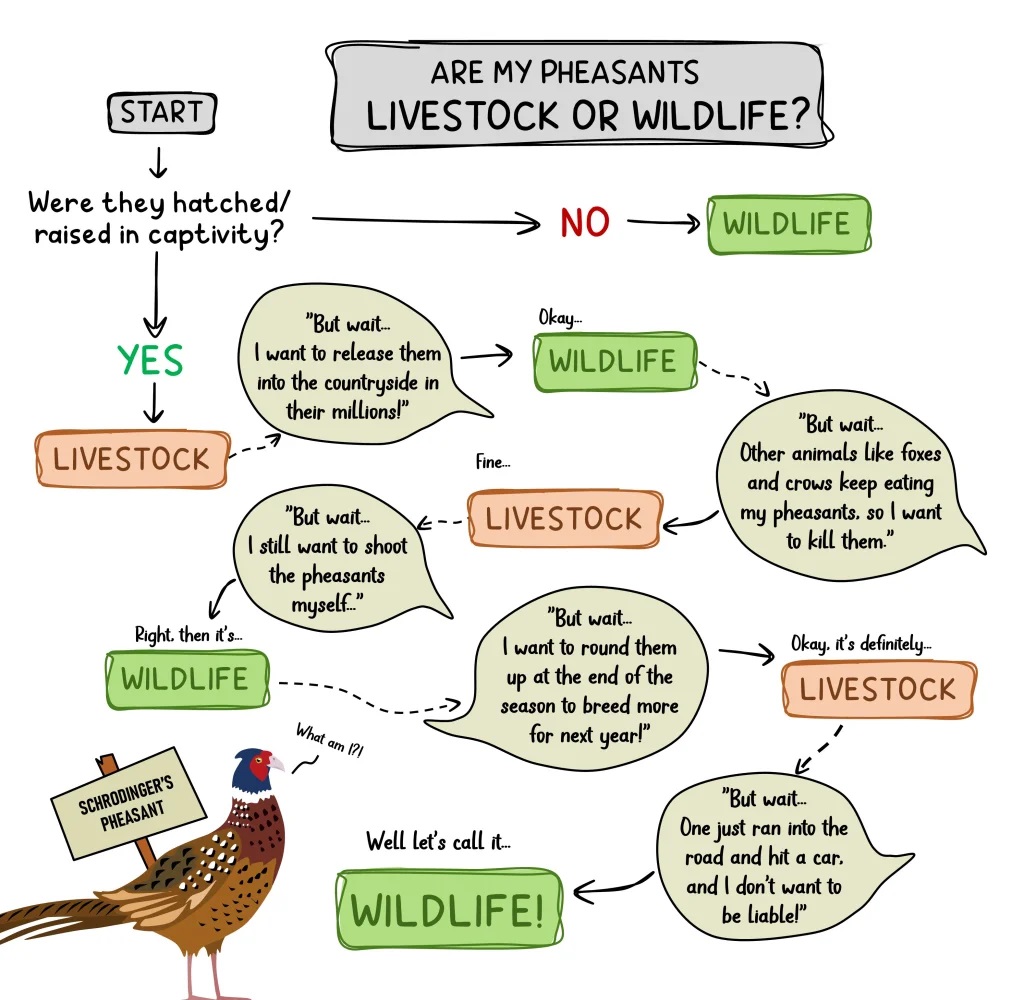Did you hear Katie-jo Luxton on BBC Radio 4 Today on Monday morning? Worth a listen and well done to Today for continuing to feature news (all of it bad) about bird flu in the absence of Defra saying much about what’s happening (click here at 08:45am, near the end of the programme).
I was giving a talk on the south coast of England on Saturday evening and heard an account of a nature reserve warden removing 600+ dead birds from a nature reserve in the last few days. This was at the Pagham Harbour RSPB nature reserve and an account of what turned out to be a fairly successful season despite many bird deaths can be found here.
The weekly Defra update of cases of bird flu in ‘wild birds’ (the awful so-called surveillance programme that is not really fit for purpose) brings records of bird flu close to my doorstep and many more cases of bird flu in Pheasants (click here).
Just down the road from me, in Higham Ferrers, there was a dead Peregrine with bird flu. I may well have seen this local bird, over my garden or perhaps at Stanwick Lakes, at some stage. The Defra report gives no details except that it is West Northamptonshire, but North Northamptonshire Council spill the beans about the location. That is just one of 20 new records of positive tests for bird flu in wild birds in week 42 of 2022. Other records include a Red Kite in Shropshire, a couple of Gannets in the Swansea area but a quarter of the records are of Pheasants. These will almost certainly be captive-bred birds which were released this summer for recreational shooting. Defra’s (and the Welsh government’s) ‘strategy’ for mitigating bird flu in wild birds included NOT making any restrictions on the release of millions of gamebirds into the countryside this summer (see here) which seemed foolish at the time and seems more and more foolish as, completely predictably, cases of bird flu in Pheasants mount.
This week’s records (all of three birds – those will be the number testing positive – the number of affected birds can only be larger) come from Harrogate, Somerset, South Lakeland, the Vale of Glamorgan and West Northamptonshire (which in this case means Towcester according to the council website). That’s a pretty good spread of records to add to Pheasant records from Suffolk, Lincolnshire, Cheshire, Norfolk and Cornwall since the Defra/Wales strategy was published. Given that the so-called surveillance programme isn’t up to much, it looks like bird flu is probably now present in Pheasants across England at least. This must be a little bit embarrassing for Lord Benyon, keen shooter and the Defra biosecurity minister (at time of writing). Now it’s time for Lord Benyon and Defra to consider regulation against catching up of so-called wild Pheasants at the end of the shooting season.
What’s catching up? Well, in the strange life of the non-native Pheasant one can switch from being livestock to a wild bird and back again to livestock whenever it suits the shooting community, so towards the end of the shooting season (January) female Pheasants are enticed back into pens to provide breeding stock for the later releases of birds (July-September) ahead of the shooting season (October-January). Because of the difficulty of sourcing eggs and chicks from the continent there may be more shoots going back to ‘catching up’ this winter. what is Defra’s position on it?

You’ve got to wonder, although Defra may not unless prompted, how sensible is ‘catching up’ in an era of avian flu. But then, you’d have to wonder, although Defra did not, how sensible is it to release millions of captive birds into the countryside to act as a reservoir for bird/poultry flu?
I think I first wrote about ‘catching up’ and bird flu back in February 2017 – see here.
[registration_form]